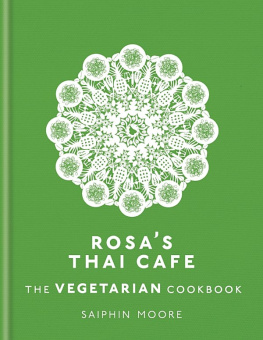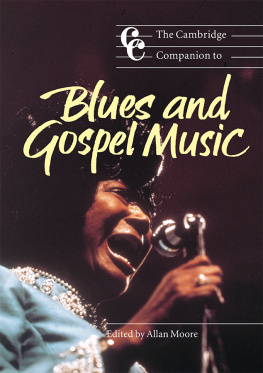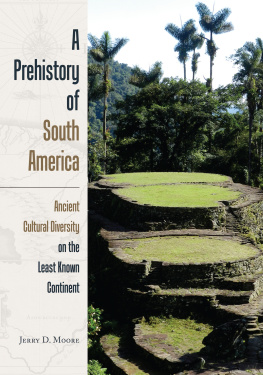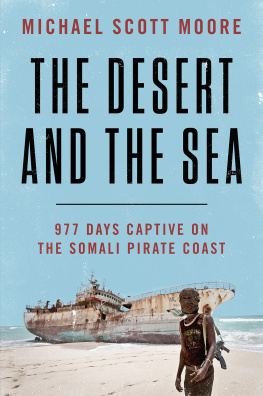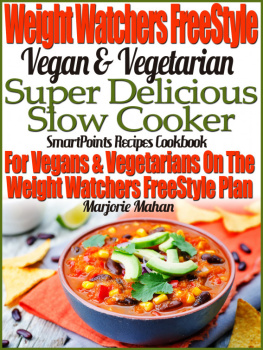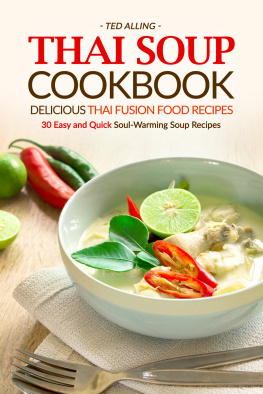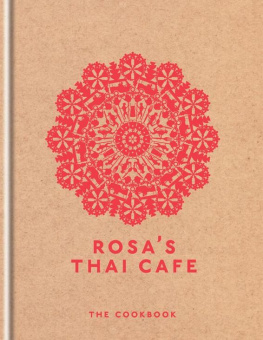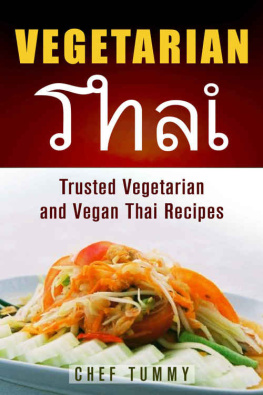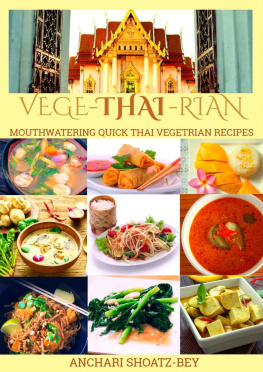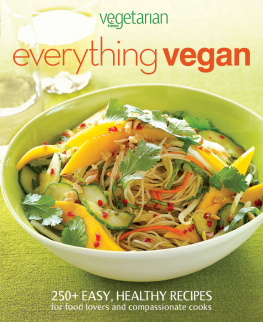Moore - Rosas Thai Cafe: the vegetarian cookbook
Here you can read online Moore - Rosas Thai Cafe: the vegetarian cookbook full text of the book (entire story) in english for free. Download pdf and epub, get meaning, cover and reviews about this ebook. City: Thailand, year: 2018, publisher: Octopus;Mitchell Beazley, genre: Home and family. Description of the work, (preface) as well as reviews are available. Best literature library LitArk.com created for fans of good reading and offers a wide selection of genres:
Romance novel
Science fiction
Adventure
Detective
Science
History
Home and family
Prose
Art
Politics
Computer
Non-fiction
Religion
Business
Children
Humor
Choose a favorite category and find really read worthwhile books. Enjoy immersion in the world of imagination, feel the emotions of the characters or learn something new for yourself, make an fascinating discovery.
- Book:Rosas Thai Cafe: the vegetarian cookbook
- Author:
- Publisher:Octopus;Mitchell Beazley
- Genre:
- Year:2018
- City:Thailand
- Rating:4 / 5
- Favourites:Add to favourites
- Your mark:
- 80
- 1
- 2
- 3
- 4
- 5
Rosas Thai Cafe: the vegetarian cookbook: summary, description and annotation
We offer to read an annotation, description, summary or preface (depends on what the author of the book "Rosas Thai Cafe: the vegetarian cookbook" wrote himself). If you haven't found the necessary information about the book — write in the comments, we will try to find it.
Moore: author's other books
Who wrote Rosas Thai Cafe: the vegetarian cookbook? Find out the surname, the name of the author of the book and a list of all author's works by series.
Rosas Thai Cafe: the vegetarian cookbook — read online for free the complete book (whole text) full work
Below is the text of the book, divided by pages. System saving the place of the last page read, allows you to conveniently read the book "Rosas Thai Cafe: the vegetarian cookbook" online for free, without having to search again every time where you left off. Put a bookmark, and you can go to the page where you finished reading at any time.
Font size:
Interval:
Bookmark:



I grew up on a farm in Khao Kho, in northern Thailand. My hometown is in a mountainous region of Phetchabun province, known as the Little Switzerland of Thailand. It doesnt snow there, but the cooler climate is perfect for growing all kinds of produce, such as cabbage, broccoli and even strawberries. My family would always cook seasonal vegetables that came straight from the field. It never occurred to me that we were eating a mostly plant-based diet.
Vegetables are a big part of my familys and of Thai culinary culture. Every October, many Thais become strict vegetarians or vegans for the month, and food stalls and restaurants are decorated with yellow triangle flags to show that they are taking part in the Vegetarian Festival. Many offer special veggie dishes and some even switch to a completely vegan menu. This tradition has been around for as long as I can remember, but its roots lie in Chinese Buddhism. There are many stories as to why vegetarianism is such an important part of Thai culture, mostly to do with showing gratitude to mother nature for providing us with bountiful land and to redeem ourselves for taking the lives of animals. Many Thais still follow a vegetarian or vegan diet at least once a week.
This book brings together my family recipes with new dishes that I have created along the way using local produce I could find, whether I was in Hong Kong, Jersey or London at the time. Living in different countries over the years, Ive learned to be inventive and not stress out too much when certain vegetables or seasoning sauces arent available in my local market. The important thing is to cook with what youve got and find good substitutes for what you havent. I hope you enjoy these recipes as much as I have.
Many of the recipes in this book are vegan, as indicated by a V symbol. 
Once youve got all the necessary ingredients, all youll need are a couple of key utensils and cookware to create a great Thai meal. Dont worry if you cant find a specific item, as there are always alternatives.
The most important item youll need to cook a Thai meal. A nonstick wok with a lid is ideal, as you can use it not only for stir-fries but also to steam vegetables before adding them to sauces. If you dont have a wok, use a large frying pan instead.
A large granite pestle and mortar is great for making curry pastes, but it will take you up to 45 minutes to pound the ingredients together by hand. You can use a food processor instead. I use a separate small food processor for curry pastes as the ingredients can stain the bowl and leave a strong taste behind you wouldnt want your crushed peanuts to smell like green curry.
. If this isnt something you would want to invest in, I recommend crushing the garlic and chillies in a granite mortar and adding them to the mixing bowl together with the remaining ingredients for the dressing.

On the following pages, I have highlighted key ingredients and cooking processes that will allow you to make my recipes with ease at home.
For a vegetarian version of a classic Thai dish, I use a combination of soy sauces and salt to achieve a similar effect to fish sauce. In a typical Thai kitchen you will find at least three types of sauce: light soy sauce, oyster sauce and seasoning soy sauce.
This light brown, slightly translucent sauce is great for stir-frying because its mild, sweet flavour doesnt overpower vegetables. It is widely available from Asian supermarkets and online, but if you dont have any, you can use seasoning soy sauce (see below) instead.
This is what you may think of as regular soy sauce, available almost everywhere. It is much darker and has a more intense flavour than light soy sauce.
A longer fermentation process gives this type of soy sauce its darker colour. Its great for giving a dish some colour, without adding much flavour. A small teaspoon can change the look of a dish completely, so be careful.
To make this thick, blackish-brown sauce, molasses is added at the end of the fermentation process. Its very sweet, with a hint of bitterness, and only a small amount is required to give a dish a nice glossy brown colour. I often use this sauce in stir-fry noodles and fried rice.
This is a sauce I cannot live without! Glossy and brown, it smells not unlike dark soy sauce and has the same thickness. Its great in all stir-fries and is readily available from most supermarkets and online.
Unlike standard oyster sauce, this is made from soy or mushrooms, depending on the brand. It can be used interchangeably with vegetarian stir-fry sauce (see entry above).
As the name suggests, this product is made by fermenting soybeans with salt. This yellow-brown paste, which still has some pieces of soybean floating around in it, is a great alternative to adding salt to a dish and gives the dish a sharp and tangy flavour.
There are hundreds of different types of alternative sources of proteins. I cook mainly with tofu, as its what I grew up with and it tastes great in Thai dishes.
Firm block tofu is easily found at supermarkets, but you can use extra-firm tofu instead there is no difference to the taste. Always use firm or extra-firm tofu for dishes that involve stir-frying in a wok or deep-frying in oil, as it holds its shape and doesnt break apart. Thoroughly drain the tofu before cooking, or pat it dry with kitchen paper.
Thanks to the turmeric added during the fermentation process, this is yellow on the outside but white on the inside. Yellow Chinese tofu is quite chewy, so its great for deep-frying or in stir-fries, and perfect in Pad Thai.
Ready-made crispy fried tofu is a great short cut when making stir-fries, curries or spicy salads. Packs are available from larger Asian supermarkets or online, but you can make it easily at home: cut a block of firm tofu into 2.5cm (1 inch) cubes, lightly coat in flour and deep-fry in vegetable oil until golden brown. Drain the fried tofu on kitchen paper before adding it to your dishes.
Next pageFont size:
Interval:
Bookmark:
Similar books «Rosas Thai Cafe: the vegetarian cookbook»
Look at similar books to Rosas Thai Cafe: the vegetarian cookbook. We have selected literature similar in name and meaning in the hope of providing readers with more options to find new, interesting, not yet read works.
Discussion, reviews of the book Rosas Thai Cafe: the vegetarian cookbook and just readers' own opinions. Leave your comments, write what you think about the work, its meaning or the main characters. Specify what exactly you liked and what you didn't like, and why you think so.

